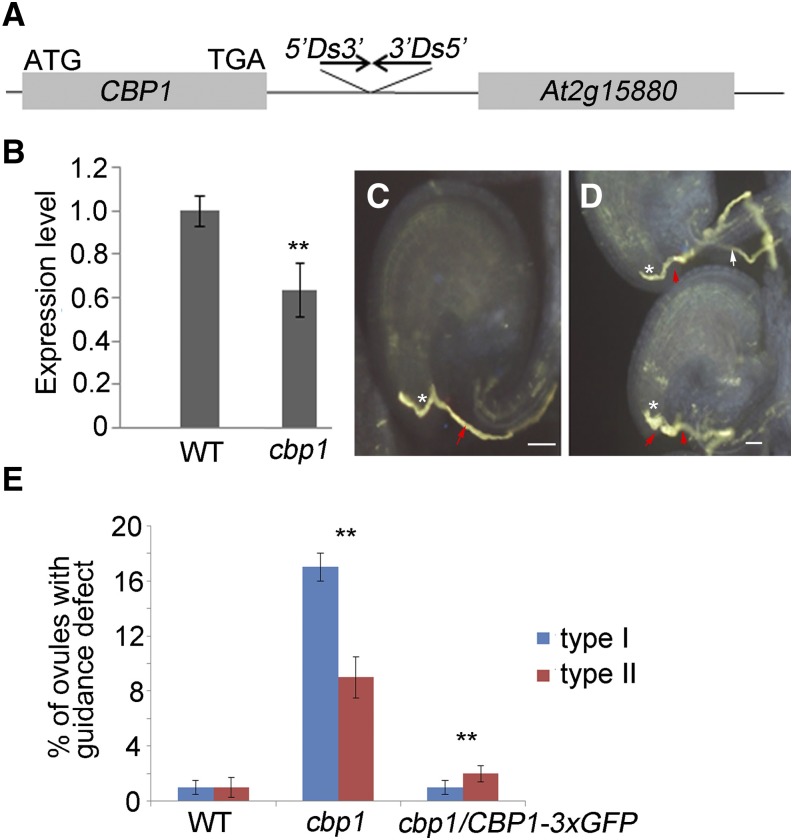Figure 5.
The Knockdown Ds Insertion Mutant cbp1 Showing Pollen Tube Attraction Defect and Polytubey.
(A) Schematic diagram of insertion of two reverse Ds elements in the 3′ untranslated region of CBP1.
(B) Real-time quantitative RT-PCR showing knockdown of CBP1 transcript in the cbp1 ovules. Each expression level was normalized to that of eIF1α. The data are the means ± sd of three independent experiments.
(C) The wild-type ovule attracted the wild-type pollen tube.
(D) The cbp1 ovules show two types of attraction defect to the wild-type pollen tubes: type I, one pollen tube failed to enter the micropyle (white arrow), and the second entered the micropyle (red arrow on the top); type II, two pollen tubes entering the micropyle (red arrows at the bottom).
(E) The average ratio (means ± sd) of two types of pollen tube attraction defects of cbp1.
Asterisks in (C) and (D) denote the micropyle; asterisks in (B) and (E) denote statistically significant differences to the wild type (Student’s t test, **P < 0.01). Bars = 20 µm.

